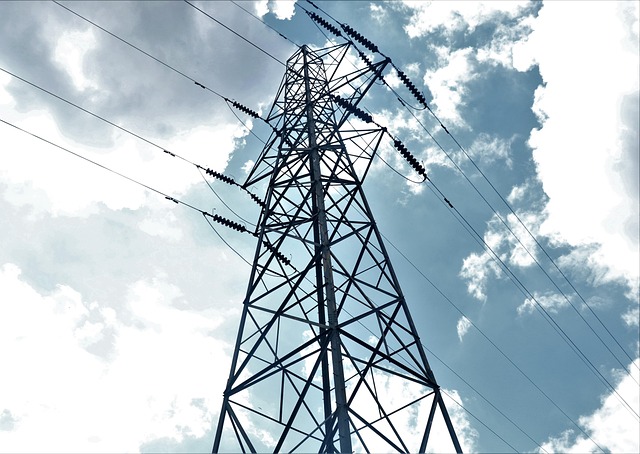WiFi cabling installation in large venues like stadiums and campuses requires strategic planning to handle high-density traffic. It involves assessing venue layout, selecting advanced cable types like CAT6A and fiber optics, proper routing, shielding, and grounding for optimal performance. Key steps include site surveys, tailored cabling plans, efficient access point placement, and robust testing. Future-proofing through modular design ensures minimal downtime and scalability for growing demands, delivering seamless connectivity during events.
In today’s digital era, ensuring robust WiFi connectivity for large venues like stadiums and campuses is paramount. As crowds gather for events, seamless wireless access becomes a defining factor for attendee satisfaction. This article delves into the intricacies of optimizing WiFi cabling installation for these spaces, offering insights on understanding crowd-centric needs, implementing efficient strategies, selecting suitable cable infrastructure, and maintaining scalable network connectivity to elevate the experience for every visitor.
Understanding WiFi Cabling Needs for Large Crowds
In large venues like stadiums and campuses, where thousands of people gather, understanding WiFi cabling needs is paramount for seamless connectivity. The primary challenge lies in catering to a vast number of users simultaneously, each demanding robust and reliable internet access. Therefore, a well-planned WiFi cabling installation becomes crucial. It involves designing a network architecture that can handle high-density traffic without compromising speed or stability.
This necessitates the use of advanced cable types and technologies capable of transmitting data at high speeds over long distances. CAT6A and fiber optic cables are popular choices due to their superior performance in crowded environments. Proper routing, shielding, and grounding techniques must also be employed to mitigate interference and ensure optimal signal strength throughout the venue.
Strategies for Efficient Stadium WiFi Installation
When it comes to installing WiFi cabling in large venues like stadiums and campuses, a strategic approach is paramount for ensuring optimal performance and coverage. The first step involves assessing the venue’s unique layout and attendance patterns. This includes identifying high-density areas where network demand is likely to be highest, such as grandstands, concourses, and gathering spaces. A site survey should be conducted using specialized tools to map out these areas, pinpointing potential obstacles like pillars or structures that might interfere with signal strength.
Once the venue’s specific needs are understood, a tailored cabling plan can be designed. This involves selecting the appropriate WiFi standard (e.g., 802.11ac, 802.11ax) based on bandwidth requirements and choosing the right cable types (Cat6, Cat6a, or higher) for reliable data transmission. Efficient placement of access points is crucial; they should be strategically positioned to provide seamless coverage without signal overlap or dead zones. Finally, a robust testing phase ensures that the installed WiFi cabling system meets performance benchmarks before hosting events, ensuring a top-notch network experience for all attendees.
Choosing the Right Cable Types and Infrastructure
Selecting the appropriate cable types and infrastructure is paramount for successful WiFi cabling installations in stadiums, campuses, or large venues. The choice of cables should align with the venue’s specific needs, considering factors like expected network traffic, coverage requirements, and environmental conditions. For instance, high-performance cat6a or fiber optic cables might be ideal for handling massive data loads and providing reliable connectivity across vast spaces.
When designing the infrastructure, it’s crucial to plan for future expansion. This involves incorporating modular and scalable cable management solutions that allow for easy upgrades without disrupting operations. Additionally, ensuring proper cabling routing and protection from potential damage is essential to maintain network integrity and minimize downtime. Incorporating robust WiFi cabling installation practices directly contributes to the overall efficiency, accessibility, and enjoyment of these large-scale venues.
Maintaining and Scaling Your Venue's Network Connectivity
Maintaining and scaling your venue’s network connectivity is paramount for ensuring a seamless experience for all attendees, whether it’s a sporting event, academic conference, or large-scale concert. As venues grow in size and capacity, so do their networking demands. Implementing robust WiFi cabling installation is key to meeting these requirements.
A well-designed WiFi cabling system allows for easy expansion and customization, enabling venues to adapt to changing needs without disrupting service. Regular maintenance checks and updates ensure optimal performance, addressing potential bottlenecks or security vulnerabilities. This proactive approach guarantees that the network keeps pace with the dynamic environment of large gatherings, providing reliable connectivity throughout every corner of the venue.
Effective WiFi cabling installation for stadiums, campuses, and large venues requires a comprehensive understanding of crowd demands, strategic infrastructure planning, and robust cable choices. By implementing efficient strategies, choosing the right materials, and ensuring ongoing maintenance, venue operators can deliver reliable network connectivity, enhancing the experience for all attendees. This ensures that each event, from sports matches to academic gatherings, runs smoothly with seamless digital access.
